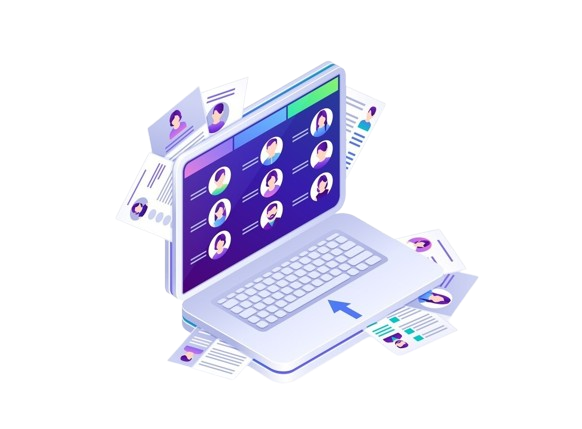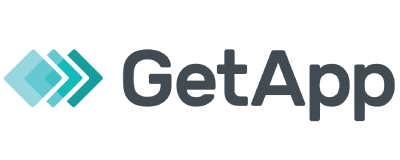Employee attrition is a subtle yet profoundly impactful phenomenon, reshaping organizations like a silent tide. Nearly 3.3 million Americans quit their jobs in October 2024 alone, signaling a persistently dynamic labor market that HR professionals cannot afford to ignore.[1] Understanding the attrition rate is crucial for businesses striving to maintain stability, as it indicates the ongoing departure of employees from an organization. In this article, we will delve into the concept of attrition rate, exploring vital strategies and formulas to help businesses effectively manage and reduce employee turnover.
What is the Attrition Rate?
The attrition rate, sometimes referred to as the churn rate, refers to the rate at which employees leave a company over a given period. It is a critical metric for organizations to monitor because a high attrition rate can signal underlying issues like poor work culture or inadequate compensation.
How to Calculate Attrition Rate
- Identify the period: Monthly, quarterly, or annually.
- Use the formula: Attrition Rate = (Number of Departures ÷ Average Number of Employees) × 100
Costs Associated with Attrition
- Recruitment Expenses: Advertising, interviewing, and onboarding new employees.
- Training Costs: Time and resources for upskilling new hires.
- Productivity Loss: Temporary decline in output while vacancies are filled.
- Intangible Costs: Loss of expertise and impact on team dynamics.
Monitoring and managing your business's attrition rate can lead to improved processes, better employee satisfaction, and reduced operational costs.
Market Insights on Attrition
Attrition in the recruitment industry has become a significant concern, prompting firms to change their operations and strategies. Recognizing the causes and impacts of attrition helps recruiters improve their processes and client satisfaction.
Industry Pressures
The competitive and fast-paced nature of many industries today places immense pressure on organizations to meet high hiring targets amidst persistent skills shortages. Companies must continuously evolve their strategies to attract and retain top talent in a marketplace where demand often exceeds supply. This dynamic can result in increased attrition if not managed effectively.[2]
Career Development
One of the leading causes of employee turnover is the lack of advancement opportunities. Employees expect their roles to provide a clear path for career progression and professional development. When these are absent, they are more likely to seek opportunities elsewhere. Companies can mitigate this risk by implementing structured career paths and investing in continuous professional development.[3]
The Shift to Remote Work
Organizations that have been slow to adapt to this transition have experienced higher turnover rates. Embracing flexible work arrangements and supporting remote teams have become essential strategies for employee retention.[4]
The Role of Organizational Culture
The culture within an organization profoundly impacts employee retention. High levels of employee engagement, bolstered by inclusive practices and recognition programs, are key to reducing attrition. By cultivating a unique and supportive work culture, organizations can differentiate themselves and foster loyalty among employees.[5]
How ATS Usage Impacts Attrition
Manatal’s AI Recommendations help ensure cultural and skills fit, reducing early turnover. This feature analyzes skills, experience, and cultural fit, ensuring you hire people who are more likely to thrive and stay long-term. Here’s how your applicant tracking system can help reduce attrition.
- Hire the right people. Fitting roles and culture to prevent quick departures.
- Utilize AI candidate scoring to enhance quality and retention.
- Integrating onboarding tools with third-party HR platforms helps smooth the transition, further lowering turnover risk.
{{cta}}
Key Metrics of Attrition Rate
Attrition rate is a crucial metric for businesses, indicating the rate at which employees leave a company. Understanding and managing attrition is vital for maintaining workforce stability.
Core Attrition Metrics
- Voluntary vs. Involuntary Separation: Understanding why employees leave, whether for personal reasons (voluntary) or company decisions (involuntary).
- Turnover Costs: Includes recruitment, training, and loss of productivity.
- Time to Fill Vacancies: The duration it takes to replace employees, impacting workload distribution.
How Leading Brands Reduce Attrition and Its Impact
- Data‑Driven Early Intervention
Many top organizations use analytics and AI to anticipate attrition risk and take preventive action.
- IBM applied an AI model with 95% accuracy to flag employees at risk. Through sentiment-based outreach and proactive well-being checks, they reduced early turnover significantly.[6]
- In the SaaS world, companies like Gainsight and Salesforce deploy AI churn predictors to single out at-risk customers—reportedly decreasing churn by up to 20%.[7]
Impact: Early detection allows for targeted, timely interventions—saving talent and customers before it’s too late.
2. Strengthening Employer Branding & Onboarding
Appealing internal and external branding combined with structured onboarding prevents premature employee departures.
- Korn Ferry highlights how firms reshaped their EVP messaging—setting realistic job expectations and aligning culture—curbing turnover especially in the first 6–12 months.[8]
- For frontline workers at FOUNT, introducing mentorship-backed onboarding slashed first-year attrition by 35%.[6]
Impact: Matching employees properly at hire and guiding them early fosters alignment and doubles retention for entry-level staff.
3. Holistic Well‑Being & Flexible Work Models
Big tech companies invest in mental health programs and flexible workplace policies to boost retention.
- Google and Microsoft offer free therapy & comprehensive employee assistance programs (EAPs), and use hard data and employee feedback to shape their approach to well-being.[9]
- Harvard Business Review found flexible work models can cut turnover by as much as 50% in some sectors.[10]
Impact: Healthier, more flexible work cultures significantly improve employee satisfaction and loyalty.
4. Employee Recognition & Culture of Belonging
Brands invest in recognition and community to enhance retention by fostering purpose and inclusion.
- Deloitte’s “always-on” recognition programs are strategically aligned with company values, leading to 14% higher engagement, improved performance, and enhanced retention rates.[11]
- McKinsey found that a sense of belonging and emotional connection is the strongest predictor of employee loyalty.[12]
Impact: Reinforcing community and meaningful recognition keeps employees from leaving, especially top talent.
Conclusion
In conclusion, understanding and strategically addressing your company’s attrition rate is essential for sustaining organizational health and long-term success. The attrition rate serves as a key indicator of workforce stability and reveals much about a company’s culture, practices, and competitiveness. Using an AI-powered applicant tracking system, investing in career development, promoting flexible work models, and fostering a strong sense of belonging, companies can mitigate the costly impact of employee turnover. Ultimately, a proactive approach to managing attrition protects institutional knowledge and builds a more resilient, engaged workforce.
Frequently Asked Questions
Q: Is the attrition rate the same as the turnover rate?
A: The attrition rate measures the reduction in a company's workforce when employees leave and are not replaced, typically through voluntary departures like retirements or resignations. In contrast, the turnover rate tracks the rate at which employees leave and are replaced by new hires, including both voluntary and involuntary departures. Both metrics are important for understanding an organization's staffing and retention strategies, but they offer distinct insights.
Q: What’s considered a healthy attrition rate?
A: An annual attrition rate of 10% to 15% is generally considered healthy across many industries, as it allows for a balanced turnover of employees. This rate enables companies to refresh their talent pool without disrupting operations or morale. However, what constitutes a healthy attrition rate can vary based on factors like company size, growth stage, and industry norms, with high-growth industries typically experiencing higher rates. Ultimately, a healthy attrition rate supports business performance and strategic workforce planning.
Q: How do you reduce attrition?
A: Reducing attrition involves creating a supportive work environment that enhances employee satisfaction and engagement. Key strategies include providing regular feedback, recognition, career development opportunities, competitive compensation, and flexible work arrangements. Open communication channels and frequent employee satisfaction assessments, including exit interviews, help address potential issues. By implementing these practices, organizations can foster a culture that encourages employees to remain committed and contribute to the organization's success.
Q: Can a high attrition rate ever be positive?
A: A high attrition rate can be seen positively if it aligns with necessary organizational changes, allowing employees misaligned with new strategies to exit and creating opportunities for fresh talent with current skills. It can also help address inefficient staffing, leading to better efficiency and adaptability. However, this must be balanced against the potential disruption and costs associated with high turnover.
Q: How often should companies measure attrition?
A: Companies should measure attrition rates regularly, typically quarterly or bi-annually, to understand workforce dynamics and identify trends. Consistent monitoring helps pinpoint issues like seasonal changes or department-specific challenges, allowing organizations to develop informed retention strategies. This proactive approach aids in maintaining a stable and productive workforce.
—
Citations
- Bureau of Labor Statistics
- SHRM
- LinkedIn Talent Solutions
- Harvard Business Review
- Gallup
- hrstacks
- rethinkCX
- Korn Ferry
- Mindfi
- Harvard Business Review
- Deloitte
- McKinsey





.png)






















.webp)

.webp)

.webp)
